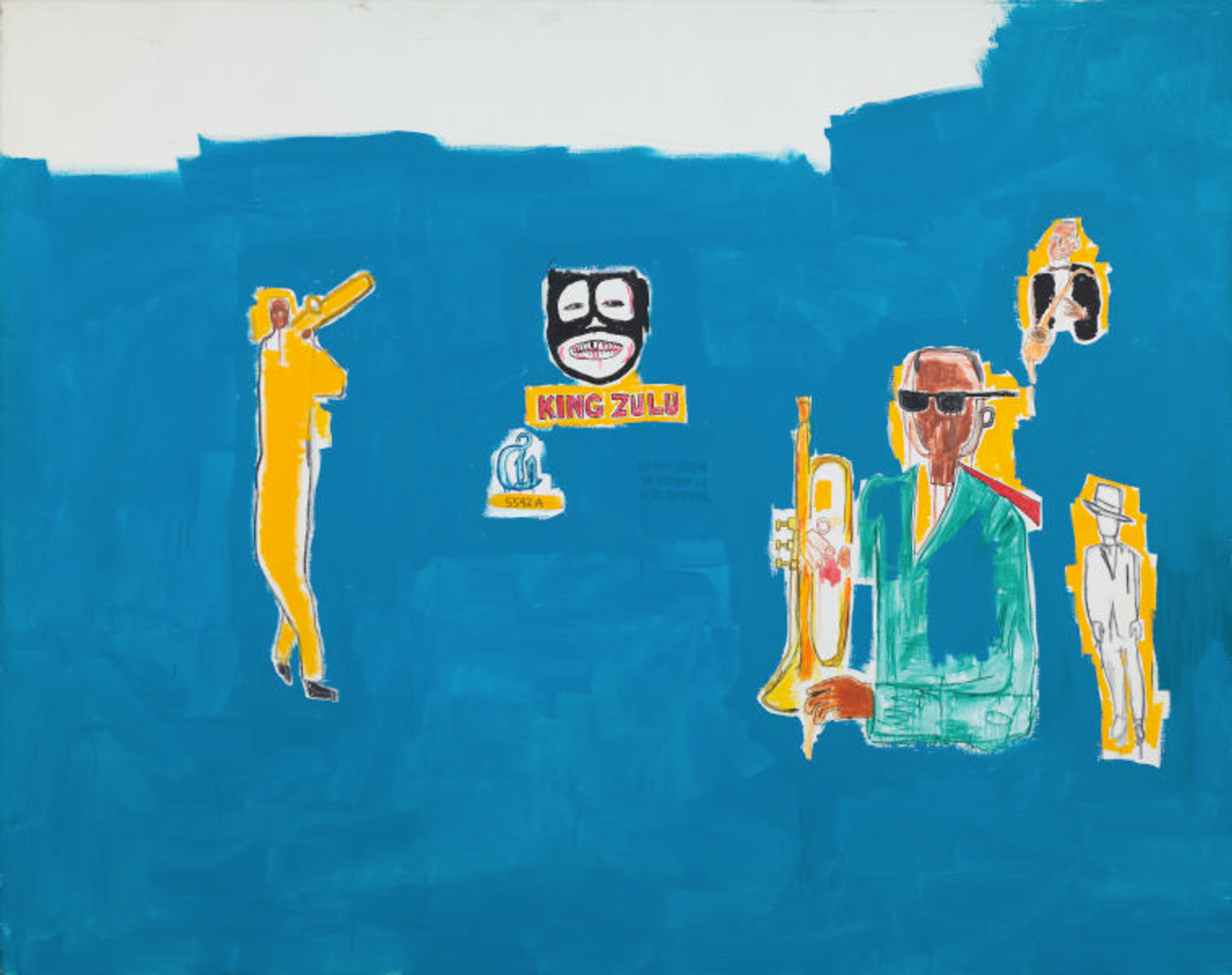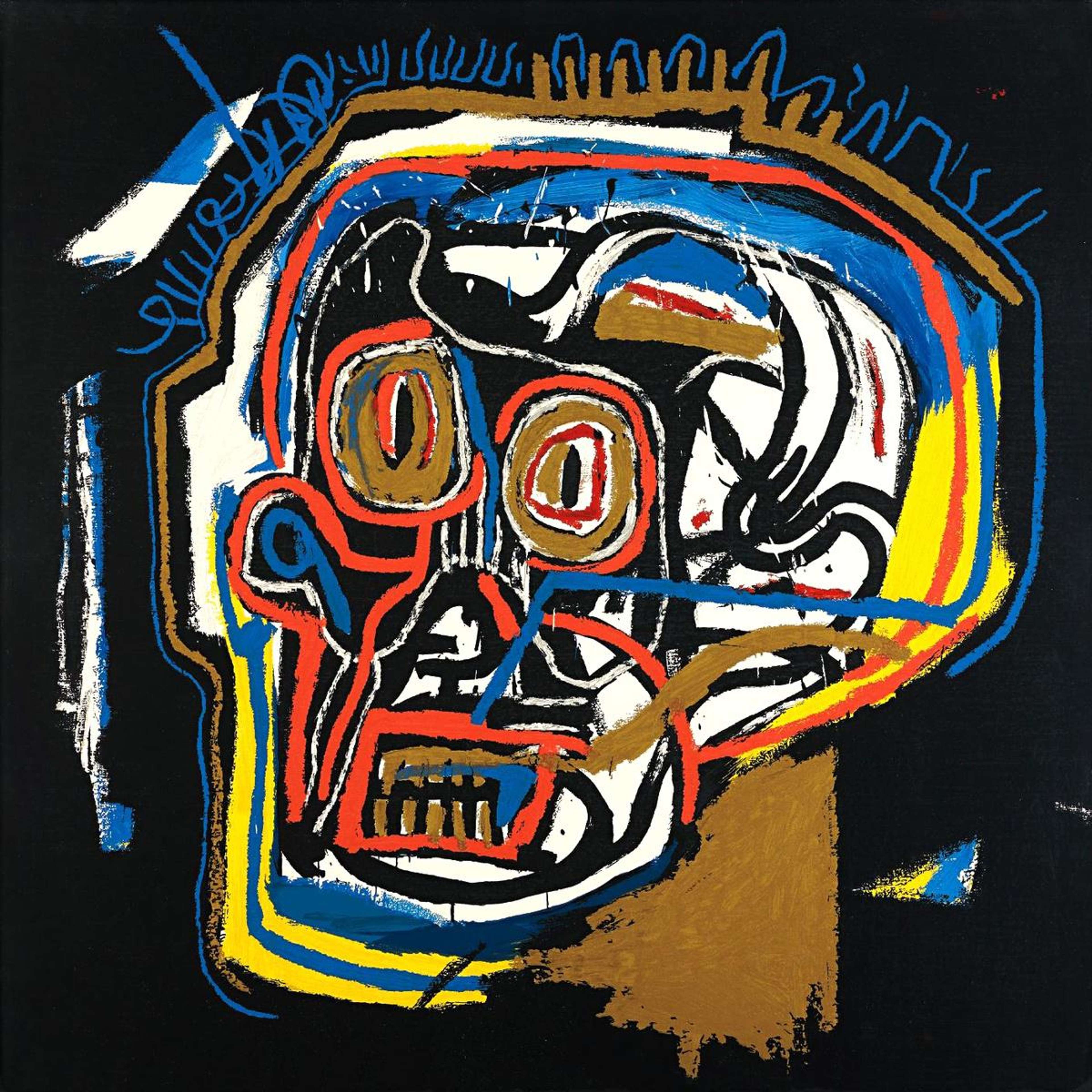Where to See Jean-Michel Basquiat's Most Famous Artworks

 Per Capita © Jean-Michel Basquiat 1983
Per Capita © Jean-Michel Basquiat 1983
Interested in buying or selling
Jean-Michel Basquiat?

Jean-Michel Basquiat
57 works
Jean-Michel Basquiat, a pioneering figure of the 1980s New York art scene, revolutionised the definition of modern art with his raw, expressive works that blended graffiti with Neo-Expressionism. Emerging from a background of street art, Basquiat's canvases were bold narratives of contrast, merging text and image to explore themes of race, class, and identity. His art, characterised by vivid colours, fragmented figures and enigmatic symbols, created its own vernacular and challenged traditional boundaries of the establishment. Basquiat's meteoric rise and his collaborations with contemporaries like Andy Warhol underscored his significant impact, making him an enduring icon in contemporary art.
Despite his widespread popularity and significant desirability on the art market, Basquiat was ignored by the traditional art world for a very long time, meaning that most of his works lie in private collections rather than in museums or galleries. Famously, the Museum of Modern Art rejected two canvases by the artist while he was still alive. Ever since his premature death at age 27 in 1988, however, his art has become highly coveted by these institutions, and can be visited by the public around the world.
 Image © The Broad / Obnoxious Liberals © Jean-Michel Basquiat 1982
Image © The Broad / Obnoxious Liberals © Jean-Michel Basquiat 1982The Broad, New York
The Broad in New York City has one of the largest institutional collections of Basquiat, much of which is on display. These include nine works on permanent view, more than almost any other public collection in the world, and another four works in the collection that have occasionally been brought out from storage. The museum is one of the foremost Basquiat specialists in the world and its collection, acquired by the museum’s founders, Eli and Edythe Broad, include some of the most famous works by Basquiat – many of which were created in the seminal year of 1982. These include Obnoxious Liberals and Untitled, the counterpart of Basquiat’s famous head which sold at auction in 2017 for over $110 million.
 Installation view of Ten Punching Bags (Last Supper) (detail) © Photograph by Essie King 2023
Installation view of Ten Punching Bags (Last Supper) (detail) © Photograph by Essie King 2023The Andy Warhol Museum, Pittsburgh
The Andy Warhol Museum's recent reinstallation on its fourth-floor gallery marks a significant unveiling of its comprehensive collection of artworks and ephemera by Basquiat, who formed a close bond and collaboration with Warhol in the 1980s. This extensive presentation includes a range of photographs, paintings, sculptures, and archival materials from Warhol’s studio, offering an in-depth look at the profound friendship and creative synergy between Warhol and Basquiat from 1982 to 1986. Highlighted within the installation are notable works such as Ten Punching Bags (The Last Supper)—addressing themes of Catholic guilt and the AIDS crisis—and the Untitled Collaboration Sculpture with Francesco Clemente, which delves into police brutality and racial injustice in America. The display showcases the blend of Warhol’s pop art sensibilities with Basquiat’s neo-expressionist flair, illustrating the resurgence in Warhol’s later career influenced by his partnership with Basquiat.
By revisiting the collaborative spirit and political engagement of Warhol and Basquiat, the museum draws a parallel between the challenges of their time and the contemporary struggles for racial justice and the ongoing impact of the coronavirus pandemic. Through this reimagined display of their collective works, the museum not only honours the legacy of two iconic artists but also emphasises the enduring relevance of their art in today’s socio-political discourse.
 Image © MACBA / King Zulu © Jean-Michel Basquiat 1986
Image © MACBA / King Zulu © Jean-Michel Basquiat 1986MACBA, Barcelona, Spain
The MACBA has three Basquiats in its collection, created between 1982 and 1986. They are rich in totemic imagery, tributes to Afro-American cultural icons such as jazz musicians, and nods to American popular culture. These pieces are marked by vibrant lines, intense brushwork, and silhouetted figures that draw parallels with German neo-Expressionism. One notable piece from 1986 stands out as a self-portrait, showcasing Basquiat's characteristic fragmented reality and oversized heads reminiscent of children's drawings. This work not only reflects his early days in New York with SAMO © but also pays homage to his heritage and influences, presenting a stark contrast between the aggressive figure and the softer background tones, encapsulating Basquiat's unique blend of spontaneity and complexity.
Another one of these works is King Zulu, which celebrates prominent American jazz trumpeters, centralising Louis Armstrong as the King of the Zulus – a role he cherished from the New Orleans Carnival Parade of 1949. This canvas merges the historical with the personal, placing Armstrong amidst other jazz legends in a blue space that mirrors the depth of the blues music they created. Another piece, Sterno, delves into the darker theme of alcohol abuse, with a central gin bottle and a can of Sterno, portraying a menacing, dual-mouthed monster. This painting emits a foreboding atmosphere through its dark, reddish hues, conveying a powerful message against the backdrop of addiction and its consequences, illustrating Basquiat's ability to navigate between admiration and cautionary tales within his eclectic body of work.
 Image © Sotheby's / Cabra © Jean-Michel Basquiat 1981-82
Image © Sotheby's / Cabra © Jean-Michel Basquiat 1981-82Guggenheim Abu Dhabi
In 2017, artist Yoko Ono sold her Basquiat work Cabra at Sotheby's. The buyer was eventually revealed as the Guggenheim Abu Dhabi, who then loaned it to the Louvre Abu Dhabi for a year. Cabra is a masterpiece from Basquiat's early period (1981-82), which marked a critical moment in the artist's career as he vividly introduced his unique voice into the art world. This is a profound examination of the black athlete's struggle and triumph, among the first to showcase the iconic boxer-warrior motif prevalent in Basquiat's oeuvre; it delves into Muhammad Ali’s historic victory over Oscar “The Bull” Bonavena in 1970, symbolising the broader narrative of black athletes overcoming adversity. Previously featured prominently in Basquiat's studio and the Champions show at Tony Shafrazi Gallery in 1983, Cabra exemplifies Basquiat's early genius through its dynamic blend of graphic forms, intricate symbolism, and painterly intensity. The painting not only immortalises Ali's triumphant return to boxing but also critiques the racial tensions of the time, serving as a testament to Basquiat's deep engagement with America's socio-cultural issues and his ability to encapsulate these themes through his art.
Basquiat’s work is also in the collection of institutions such as the Metropolitan Museum of Art, the MoMA and the Whitney. However, neither of these are currently on display, remaining in storage instead. One of the best ways to experience Basquiat artworks is through exhibitions, which often bring together works from several collections, private or not, from around the world.





